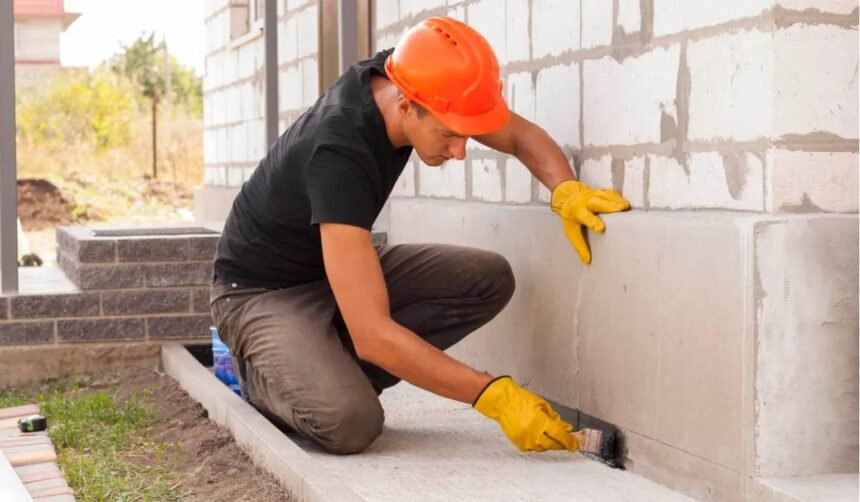A basement can be one of the most versatile parts of any structure—used for storage, living space, mechanical systems, or even as a home office. Yet, for all its value, the basement is also the most vulnerable to one of a property’s most damaging intruders: water.
Moisture intrusion into basements is one of the leading causes of structural issues, mold growth, and interior damage in homes and commercial buildings. While a small leak may appear minor, unchecked moisture can lead to significant deterioration over time. The good news? Preventing water damage in this area is achievable with proper understanding, maintenance, and systems in place.
This article explores the causes of basement moisture problems, the visible and hidden signs of damage, the range of waterproofing solutions available, and how property owners can ensure long-term protection.
Why Basements Are Vulnerable to Moisture
Understanding why water infiltrates basements is the first step toward preventing it. A combination of external and internal factors typically contributes to water problems below ground level:
1. Soil Saturation and Groundwater
Heavy rainfall or snowmelt can saturate the ground around a property. When soil becomes fully saturated, hydrostatic pressure builds and pushes water through even the tiniest cracks in concrete walls or floors.
2. Poor Exterior Drainage
If the land surrounding a building slopes toward the structure instead of away from it, water will naturally pool around the foundation. Similarly, clogged gutters or improperly extended downspouts can dump water directly against basement walls.
3. Cracks in Walls or Floors
As concrete ages, it can develop stress cracks due to shifting soil, settlement, or temperature fluctuations. These cracks often act as entry points for water.
4. High Humidity and Condensation
Not all moisture comes from the outside. In basements without proper ventilation or insulation, warm air can condense on cold surfaces, creating dampness and encouraging mold growth.
5. Deficient Construction Practices
Older properties or buildings constructed without modern water control methods are more likely to suffer from moisture issues. The absence of vapor barriers, footing drains, or waterproof coatings often contributes to long-term problems.
Signs Your Basement Has a Water Problem
Some water issues are immediately obvious, while others develop silently over time. Recognizing early warning signs can help avoid major repairs:
- Musty odors, even without visible water
- White, chalky deposits on basement walls (efflorescence)
- Peeling paint or bubbling drywall
- Warped wood or baseboards
- Damp or wet carpet
- Visible mold or mildew
- Cracks in walls or flooring
- Water stains or pooling after heavy rain
While not all signs indicate a major issue, consistent or recurring symptoms point to underlying vulnerabilities that should be addressed before they escalate.
Prevention Starts on the Outside
The most effective way to stop water from entering the basement is to manage it before it reaches the foundation.
Proper Grading
Ensure the soil around your home slopes away from the foundation at a gradient of at least 6 inches over the first 10 feet. This encourages water to drain away rather than pool near the structure.
Gutters and Downspouts
Clean, functional gutters and downspouts are essential. Downspouts should extend a minimum of 4–6 feet away from the home to carry water well beyond the foundation zone.
Drainage Systems
Exterior French drains or curtain drains can capture and redirect groundwater before it reaches your walls. These systems are particularly helpful on sloped lots or in areas with poor natural drainage.
Interior Moisture Control
Even with effective exterior defenses, moisture can still find its way inside. Interior strategies are necessary for ongoing protection, especially in areas with persistent dampness or below-grade walls.
Dehumidification
A basement dehumidifier reduces indoor humidity levels, preventing condensation, mold growth, and musty odors. Ideal relative humidity levels range between 30% and 50%.
Insulation and Ventilation
Use insulation with vapor barriers to prevent condensation on walls and pipes. Adequate ventilation helps circulate air and remove moisture naturally.
Sealants
Concrete sealers and masonry coatings can be applied to interior basement walls to reduce water seepage through pores and cracks. While these solutions may not stop severe leaks, they provide a layer of defense against minor dampness.
Waterproofing Systems: What to Know
Protecting the basement from water is not about applying one fix—it’s about implementing a combination of systems that address both symptoms and causes.
1. Interior Drainage Systems
Interior drainage systems are installed along the perimeter of the basement floor. These systems collect water that enters and redirect it to a sump pump, which then expels it outside. This method is less invasive than exterior excavation and is effective for managing existing water issues.
2. Sump Pumps
A sump pump is a mechanical system that collects water from drains or directly from the basement and pumps it outside. Pumps with battery backups are recommended to ensure operation during power outages.
3. Exterior Waterproofing
Exterior solutions are comprehensive and permanent. This process often involves:
- Excavating the soil around the foundation
- Cleaning and sealing the exterior wall with waterproof membranes
- Installing drainage boards and new footing drains
- Backfilling with gravel to promote better drainage
Though costly and labor-intensive, this method stops water before it contacts your basement walls, making it ideal for severe or long-term problems.
Health and Structural Implications of Moisture
Water in basements is more than an inconvenience—it can cause serious damage to the structure and pose health risks.
Mold and Mildew
Mold spores thrive in damp environments and can grow on wood, insulation, drywall, and carpets. Prolonged exposure to mold can lead to respiratory issues, allergies, and other health concerns.
Foundation Degradation
Persistent moisture weakens concrete over time. Hydrostatic pressure can widen cracks, shift foundation walls, and even cause bowing or buckling.
Decreased Property Value
Homes with moisture problems or visible mold often fail inspections and appraisals. Addressing these issues early protects your investment.
Choosing the Right Solution for Your Property
There’s no one-size-fits-all approach when it comes to keeping basements dry. The right system for your home or building depends on a number of factors:
- Soil type and water table level
- Climate and precipitation patterns
- Existing drainage infrastructure
- Age and condition of the property
- Intended use of the basement (e.g., storage vs. living space)
Consulting with a waterproofing professional ensures that your plan is tailored, efficient, and code-compliant.
Maintenance: An Ongoing Commitment
Even the best waterproofing systems require periodic upkeep:
- Test sump pumps twice a year
- Clean gutters and downspouts seasonally
- Check grading and drainage after major storms
- Inspect walls and floors annually for new cracks
- Run dehumidifiers regularly in humid climates
Prevention is significantly more affordable than restoration—routine checks can help you spot small issues before they escalate.
Conclusion
Basement waterproofing is not just about stopping leaks—it’s about proactively defending one of the most essential parts of your property. With the right combination of interior and exterior strategies, smart maintenance, and expert guidance, you can create a basement environment that is dry, safe, and ready for use.
From reducing the risk of mold to preserving the integrity of your foundation, investing in proper moisture control is a choice that pays off both immediately and long into the future. Whether you’re finishing your basement or simply want peace of mind during the next heavy rain, waterproofing is an essential layer of protection every structure deserves.









